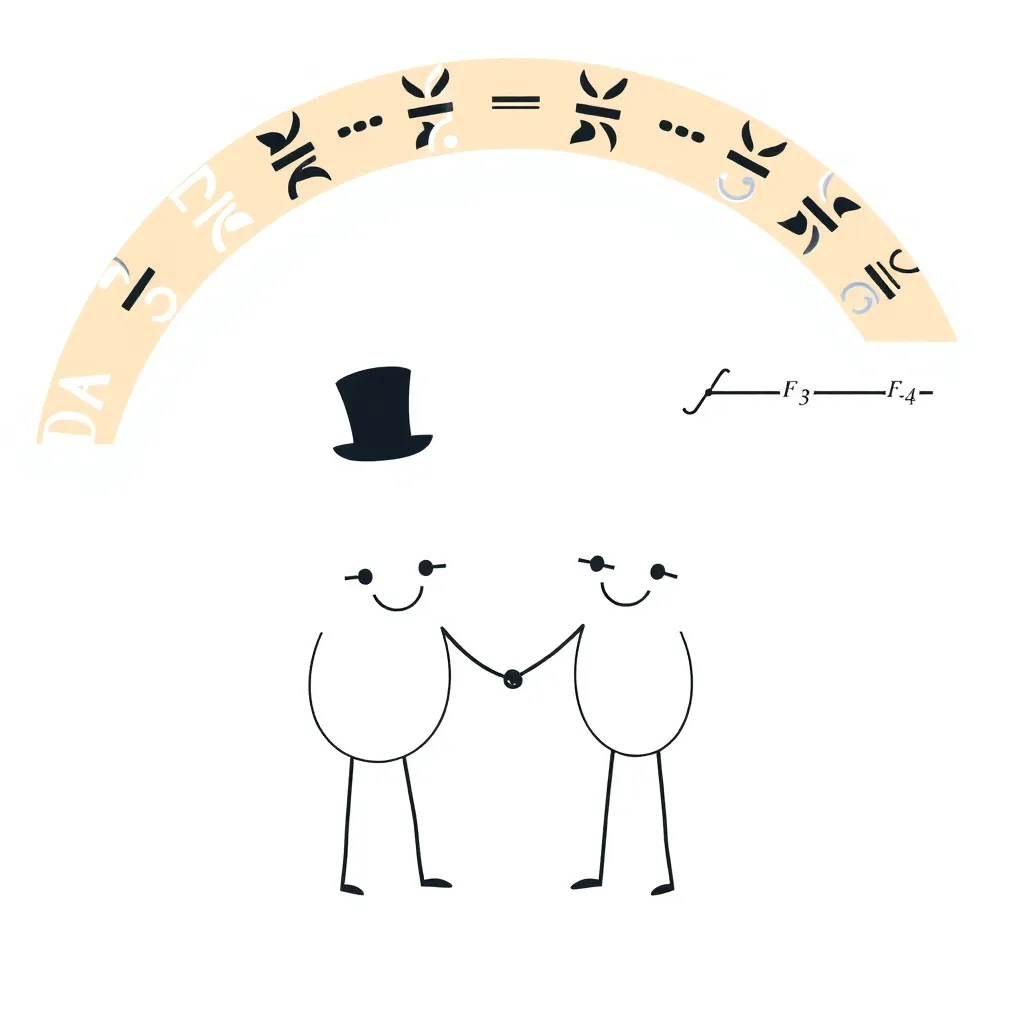In a groundbreaking study funded entirely by leftover pizza coupons and existential dread, the International Consortium of Very Serious Math People (ICVSMP) has definitively mapped human sexual orientations onto algebraic functions, rendering centuries of nuanced identity discussions obsolete. Dr. Al Gebra, lead researcher and wearer of suspiciously stained cardigans, announced the findings at a press conference held inside a hyperbolic paraboloid-shaped tent. "Why wrestle with messy human emotions," Gebra declared, adjusting his slide rule, "when you can reduce romance to a simple derivative? It’s elegant. It’s reductive. It’s math."
The consortium’s seminal paper, Love is Just a Slope (And Other Lies We Tell Ourselves), posits that heterosexuality is best represented by the function y = x—a tragically linear path where attraction only ever moves diagonally upward toward the opposite gender axis, like a lost tourist following a single, very boring map. "It’s efficient," Gebra explained, "but frankly, a bit dull. Like eating plain rice cakes at a banquet." Meanwhile, homosexuality is modeled by y = x², a parabola that curves gracefully away from the x-axis, symbolizing how same-gender attraction "peaks dramatically and then just... keeps going upward, probably to a very nice brunch spot."
Bisexuality, the study claims, is perfectly captured by y = sin(x)—a wavy, oscillating function that fluctuates eternally between positive and negative attraction values. "See this peak?" Gebra scrawled furiously, nearly breaking the chalk. "That’s attraction to men! And this trough? Attraction to women! And this other peak? Also attraction to men! Or maybe women! Honestly, it resets every 2π radians, so who’s counting?" Critics argue this oversimplifies the bisexual experience into a never-ending sine wave of indecision, but Gebra dismissed concerns: "Indecision is just a periodic function with low amplitude. Move along."
Most controversially, the ICVSMP introduced "cosexuality" (a term coined 12 minutes before the press conference) as y = cos(x). "It’s gay, but with better posture and a head start," Gebra insisted, ignoring frantic whispers from linguists in the back. "While sine starts at zero and then gets interesting, cosine begins at maximum attraction—clearly the superior orientation. It’s like arriving at a party already holding a drink." The American Mathematical Society has since banned graphing calculators in 17 states, citing "unregulated asymptotic behavior" as a threat to children.
When asked about pansexuality, asexuality, or the fact that human attraction isn’t actually governed by high school calculus, Dr. Gebra sighed and scribbled y = |x| on a napkin. "That’s for next quarter’s grant proposal. Or maybe never. We’re busy proving that love triangles are just non-Euclidean bed configurations." The study concludes that all orientations inevitably converge at infinity—a place described only as "where the WiFi is weak and everyone shares one sad desk."

